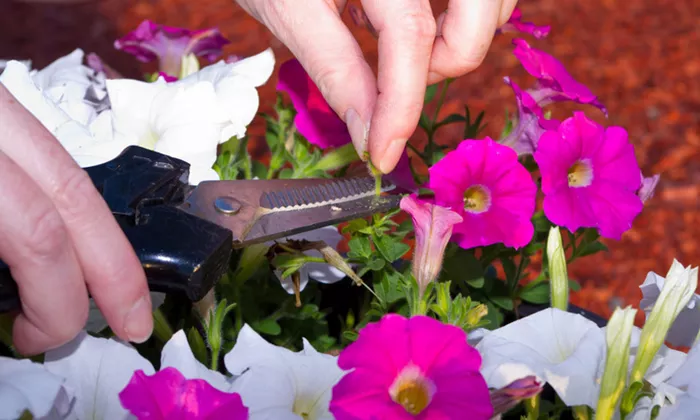Petunias are a favorite among gardeners for their bright colors and full blooms. To help them flower all season long, one simple step can make a big difference—deadheading. This method removes faded flowers to encourage new growth and prevent the plant from putting energy into producing seeds.
Deadheading is easy, and doing it regularly keeps your petunias looking fresh and full of life throughout the summer.
When Should You Deadhead Petunias?
There’s no set schedule. Watch your plants and start deadheading when blooms begin to fade. You’ll notice spent flowers shrinking, turning brown, or becoming limp. Removing them early stops the plant from focusing on seed production and pushes it to grow more flowers instead.
Even though petunias will eventually drop old flowers on their own, the base of the flower (called the ovary) usually stays attached. That part can still develop seeds. Removing the entire flower—including its base—signals the plant to keep blooming.
Do All Petunias Need Deadheading?
Some varieties, such as Wave petunias and Supertunias, are “self-cleaning.” These types naturally drop their old blooms. Still, occasional pruning can help them grow fuller and may encourage even more flowers. Even if it’s not required, many gardeners still remove faded blooms to keep their plants looking tidy.
How to Deadhead Petunias: Step-by-Step
1. Pinch the Right Way
To deadhead properly, pinch off both the flower and the small stem that holds it. This ensures the seed-forming ovary is also removed. Use your thumb and forefinger to gently pinch the flower back to the main stem. Don’t just pull—it may leave the ovary behind.
2. Use the Right Tools
Petunias can be sticky, so you may want gloves or tools like mini garden snips. Some gardeners also use thumb knives—silicone covers with a small blade that makes pruning quicker and easier.
3. Trim Whole Stems When Needed
If your petunias are getting tall and leggy or have many faded flowers, you can cut back the whole stem. Trim about one-third to one-half of the stem’s length. Make the cut above a side branch or bud. This helps the plant grow bushier and brings on new flowers.
4. Cut Back Gradually
Cutting back a few stems at a time lets the plant keep some flowers while regrowing others. If your growing season is long, you can do this two or three times during the summer.
How Often Should You Deadhead?
The more often, the better. Some gardeners deadhead daily, removing old blooms as soon as they spot them. This keeps the plant neat and reduces the work each time. If that’s too much, once or twice a week is enough to maintain steady flowering. For best results, aim for two to three times per week during the growing season.
Whether you grow petunias in containers, hanging baskets, or flower beds, deadheading is a simple habit that keeps them blooming beautifully all summer long.
FAQs
How long do petunias bloom?
If you deadhead regularly, petunias can bloom nonstop from spring until the first frost.
Should I deadhead after the blooms wilt?
Yes. Deadhead as soon as the flower starts fading in color or becomes limp. Just remember—wilting leaves or stems might mean your plant needs water, not deadheading.
Does deadheading stop seeds from forming?
Yes. The main reason for deadheading is to prevent seed production. This keeps the plant focused on creating more flowers.
What if I don’t deadhead my petunias?
Without deadheading, many petunias will bloom less over time. The plant will use its energy to make seeds instead of flowers. Self-cleaning varieties may still bloom well without deadheading, but light pruning can still help them look better and bloom more.


